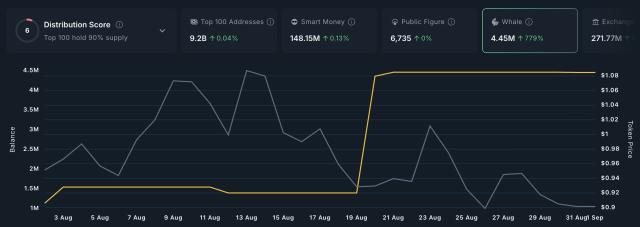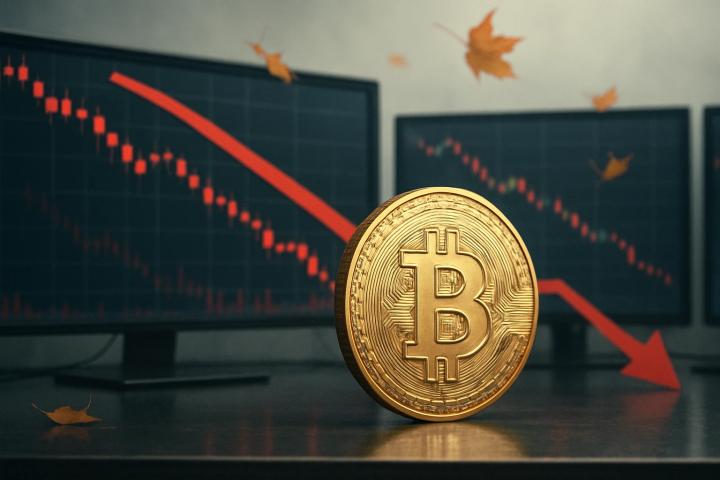
Title image source: "1998 Water Margin"
In 298 BC, Lord Pingyuan of Zhao State had 3,000 retainers. Mao Sui alone was able to debate with many scholars in the court of Chu State and win a chance for the survival of Zhao State.
More than two thousand years later, on September 1, 2025, a token called WLFI was launched on a global trading platform. A trans-Pacific Chinese capital network is supporting the digital empire of the American presidential family.
Behind this project, valued at $40 billion, stands a group of modern-day "hangers." There's a Chinese billionaire who invested $75 million, a trading platform founder seeking a presidential pardon, a stablecoin expert deeply rooted in the Asian market, and an Eastern power said to be capable of "booming the Trump family's fortunes, but also plunging them into poverty overnight if they overstep their bounds."
As the wealth of American political families becomes deeply intertwined with Eastern capital, and as China influences the global encryption landscape through the Hong Kong market, a new geopolitical game is unfolding.
Binance, the hub of the Chinese network
To understand the influence of Chinese people in the WLFI project, we must start with Binance, the world's largest cryptocurrency exchange. This trading platform, founded by Chinese people, has now become the nerve center of the entire Chinese crypto network.
Binance accounts for approximately 30% of global cryptocurrency trading volume, with an average daily turnover exceeding $20 billion. Its penetration rate in the Asian market exceeds 60%, meaning that most capital flows pass through its system. This control has given Binance a near-monopoly position within the Chinese online community.
Binance founder CZ(CZ) was sentenced to four months in prison for anti-money laundering violations. According to sources familiar with the matter, CZ is seeking a pardon from Trump through various channels. This rumor is not unfounded. During his first term, Trump granted clemency to several financial criminals, including his former campaign manager, Paul Manafort. While a four-month sentence may not be long for CZ, for a business empire controlling hundreds of billions of dollars in assets, the founder's freedom is crucial to the stability of the entire system.
On March 13, 2025, the Wall Street Journal reported that the Trump family was in talks to acquire a significant stake in Binance.US, a claim strongly denied by CZ. Bloomberg subsequently published an article stating that they were confident some of the information was sourced reliably, citing four anonymous sources with inside knowledge of the matter, including a statement about the upcoming collaboration between the two parties to launch a stablecoin, the USD1 we now know as USD.
Despite strong denials from both parties, USD1’s interaction with Binance still reflects the close relationship between the two.
At the end of April, WLFI and CZ’s official social media accounts released photos of WLFI’s three co-founders meeting with CZ in Abu Dhabi, saying that the discussions included how to expand global adoption, develop new standards, and push cryptocurrencies to new levels.

In early May, Eric Trump, the second son of President Donald Trump, revealed at the Token2049 event that Abu Dhabi investment company MGX had invested $2 billion in Binance, paid for in the USD1 stablecoin. While this amount would typically be quickly converted to US dollars, Binance retained $1.9 billion of it in its own address, becoming the largest holder of USD1, holding 92.8% of the total circulating supply.
This operation directly inflated USD1's market capitalization from $130 million to $2.1 billion. Excluding this capital injection, the actual circulating supply of USD1 is only around $100 million. These seemingly inflated figures are a key support for WLFI's $40 billion valuation. While this type of price inflation might constitute market manipulation in traditional financial markets, it has become a common practice in the relatively laxly regulated cryptocurrency sector.
That same month, WLFI officially released a tweet, publicly announcing its support for the Binance BNB Chain ecosystem's cultural mascot meme token, $B (BUILDon), and purchasing approximately $25,000 worth of $B. The news sent shockwaves through the market, sending the token's price soaring, reaching a market capitalization of over $300 million.

WLFI's public endorsement of $B is more than just a small investment. For Binance, meme coins serve as both an amplifier of community sentiment and a natural gateway for traffic. The attention generated by the hype surrounding $B quickly fed back into the USD1 narrative. It's no longer just a newly launched stablecoin; it's been packaged into a larger story of "ecosystem expansion" and "community building."
Within this system, Binance is employing a familiar tactic, tying the promotion of its stablecoin to the frenzy of the meme market. First, it uses the meme coin to attract attention, then embeds USD1 as a "base currency." Hype becomes a strategy, and hype becomes a tool for market education. As a result, USD1's ecosystem promotion has quickly garnered a buzz far exceeding its actual size.
The gathering of Chinese retainers
Beyond Binance, a core group of technology projects are also present. Their collaboration with WLFI has further strengthened the connections within the entire ecosystem. These seemingly independent companies actually form a sophisticated network of Chinese capital.

Ryan Fang: The only Chinese person in the current team and Binance's most trusted project operator

Ryan Fang holds a key position within WLFI's Chinese technical network and is the only Chinese member of the current team. Ankr is also recognized within the industry as a "Binance affiliate." In addition to its BSC node and liquidity staking services, well-known BSC (now BNBChain) ecosystem projects such as BounceBit, Auction, and Neura are all from the Ankr team.
Ryan is the co-founder and COO of Ankr and also co-founded PrimeBlock and Tomo. He spent his early career at Morgan Stanley and later in private equity, gaining experience in traditional finance. This background has enabled him to more quickly grasp the integration of capital and technology in the blockchain world.
As a leading global blockchain infrastructure service provider, Ankr provides RPC nodes and cross-chain tools for multiple projects, including Binance's BSC chain. USD1's circulation relies on these nodes for transfer confirmation and network stability. Through Ankr's cross-chain services, USD1 can be freely transferred across multiple chains, including Ethereum, BNB Chain, and Polygon.
Ankr plays another role within WLFI. Its Liquid Staking product allows USD1 to be staked and generate returns, transforming the token from a simple payment tool into an asset with financial attributes. While users earn returns, they also contribute liquidity to the entire ecosystem. Ankr already serves over 8,000 blockchain projects, and these existing customer relationships form a natural channel for USD1's expansion. Stablecoins seeking to enter new use cases can leverage Ankr's network for distribution.
As a modern-day “doorman,” Ryan Fang embedded a newly issued stablecoin into the daily operations of the global crypto market through infrastructure.
Rich Teo: The Foxconn Factory in Charge of Stablecoins

Paxos co-founder Richmond Teo is also involved in the WLFI project.
Paxos was once Binance's most important stablecoin partner. Its BUSD, issued by Paxos, long served as Binance's primary stablecoin, boasting a market capitalization exceeding $20 billion. During 2022, Paxos became the world's leading stablecoin issuer and technology provider. Its co-founder, Rich Teo, had a close personal relationship with Binance CEO CZ, and at the time, the company sparked a major scandal within the crypto community, prompting CZ to make a rare post on WeChat Moments to refute the rumors.
By 2023, US regulators required Paxos to cease issuing BUSD, sending the company plummeting from prominence and into a prolonged period of inactivity. The industry generally believed Paxos had lost its competitiveness. However, with the advancement of US stablecoin legislation, Paxos once again emerged as one of the teams to reap the benefits of regulation. Paxos is behind stablecoins such as PayPal's PYUSD and DBS Bank's USDG.
Teo, who oversaw Asian market operations at Paxos, is deeply familiar with the regulatory compliance path for stablecoins under various regulatory regimes. The suspension of BUSD was a significant blow to him, but it also forced him to gain experience in navigating regulatory and market contraction. This experience is particularly crucial for WLFI. The issuance and circulation of USD1 also face regulatory uncertainty.
Teo's arrival is more than just a personal comeback; it also signals Paxos's attempt to re-enter the stablecoin market through WLFI. This relationship has made USD1 more accessible to the market and reinforced Binance's trust in WLFI. For the entire Chinese network, Teo's addition represents a crucial step forward in compliance and regulatory oversight.
For the full article, please go to the [Beating] official account to read
Click here to learn about BlockBeats' BlockBeats job openings
Welcome to join the BlockBeats official community:
Telegram group: https://t.me/theblockbeats
Telegram group: https://t.me/BlockBeats_App
Official Twitter account: https://twitter.com/BlockBeatsAsia








